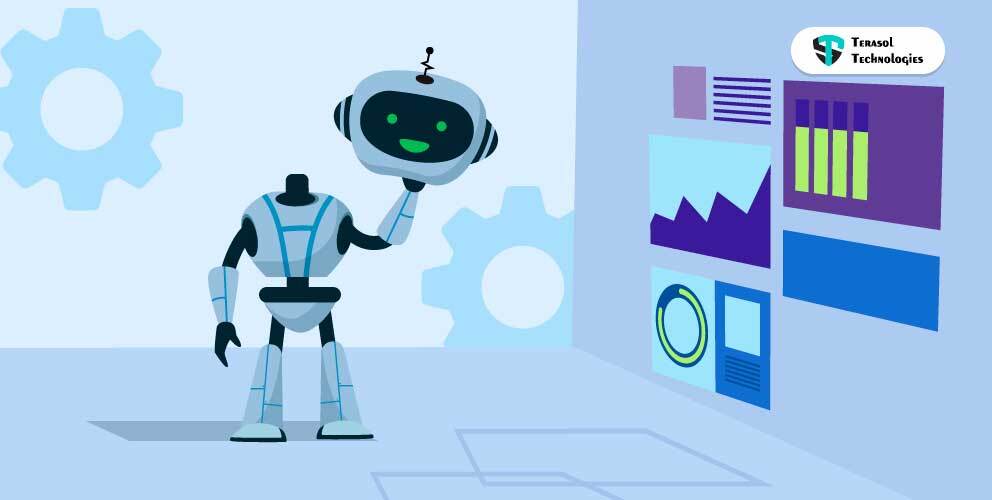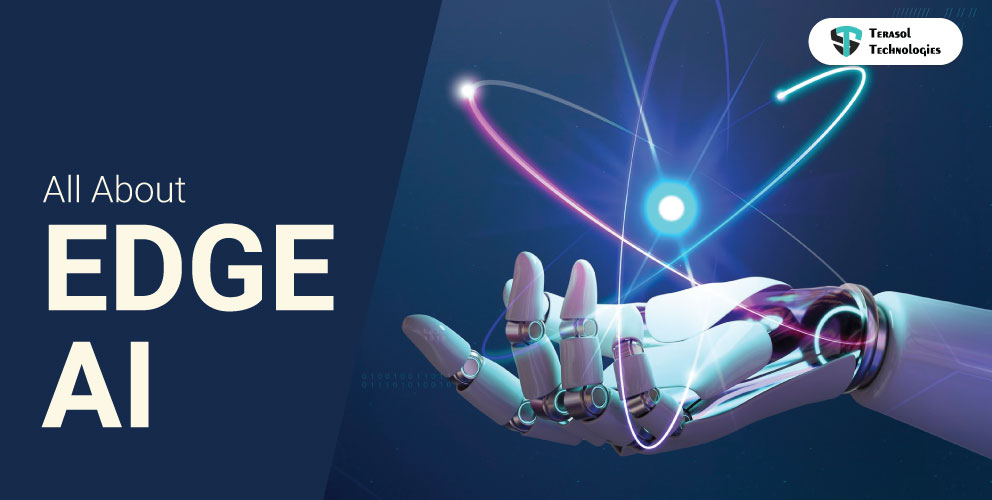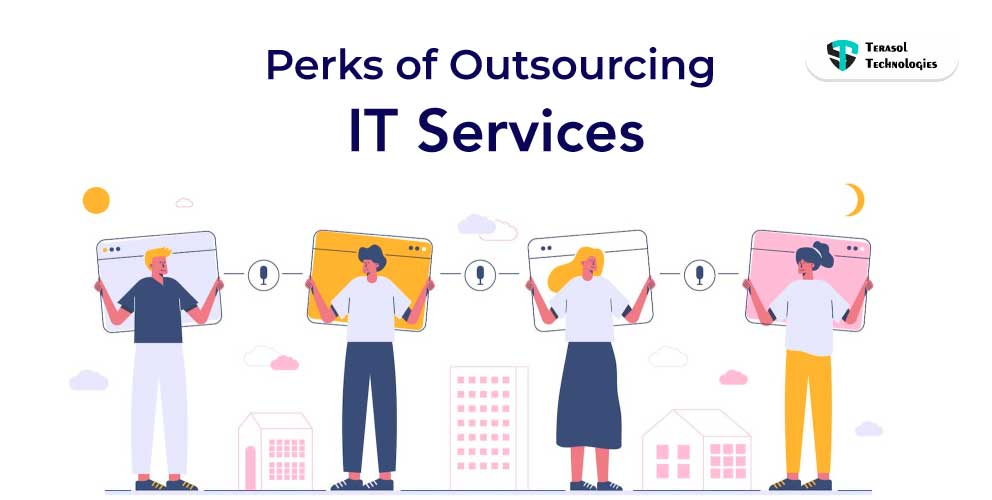Headless E-commerce: Benefits , Drawbacks and Best 5 Examples
The e-commerce landscape is shifting. It could even be said that it has lost its head.
Sounds crazy, right?
Consumers are becoming accustomed to consuming material and making purchases through a variety of touchpoints. Today's digital world is focused on users more than ever before, thanks to the web and the Internet of Things (IoT). Customers' demands are outpacing the capabilities of legacy e-commerce platforms.
Organizations that rely on e-Commerce as a major part of their business model must adapt to maintain a competitive advantage; as a result, many are moving to headless e-commerce for delivery. We've arrived at a moment where a customer's online experience is as vital as – if not more significant than – their offline experience. They need to provide an online version of the brand experience that customers have in shops.
This is where the concept of headless e-commerce architecture comes into play.
E-Commerce firms that are ahead of the curve are reaping the benefits (hello there, Amazon or Flipkart), while others are scratching their heads *ahem*, unsure how to get in on the action without inventing their own IoT gadget or building back-end solutions from the ground up.
A headless content management system — and, by extension, headless commerce — is the solution for them.
Let's see what exactly is headless e-commerce.
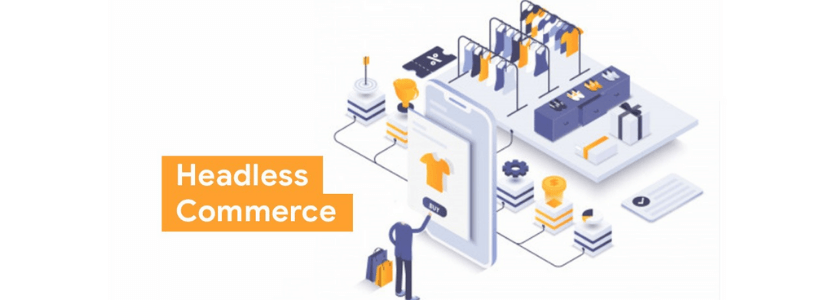
What is Headless E-commerce?
Headless e-commerce is the separation of an e-commerce application's front-end and back-end functionality. The frontend, or "head," can be updated or changed independently -let's say the user interface, social commerce, digital marketplaces, IoT, and many more- of the backend.
Headless commerce, in a nutshell, is an eCommerce solution that stores, maintains, and delivers content without the use of a front-end delivery layer. A headless commerce platform decouples the front end, which in most cases is a template or theme, leaving only the backend.
The use of APIs, experienced managers, and tools with the importance of IT partners, are all the hallmarks of headless. A headless CMS is one of the components of a headless commerce architecture. The backend database that maintains the content, headless commerce also uses a separate inventory management system. Customer relationship management systems (CRMs), payment processing platforms, multi-channel security systems, and other backend systems are common.
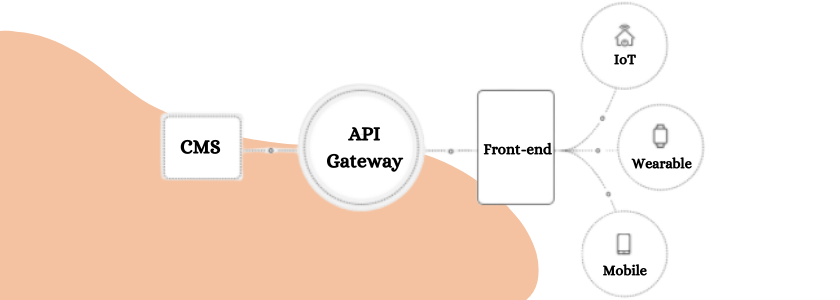
Let's see a case to ease your understanding.
Imagine a consumer or you are browsing a product on a mobile browser and decide to buy it.
If you are a new customer, you will be asked to fill out a form. It will be then used to update the company's CRM system. This information could also come through a platform like PayPal, Google Pay, Apple Pay, or another tool that helps you complete your purchase faster.
Then to process the order, the headless e-Commerce system's presentation layer sends an API call to the application layer. To show the customer the status of their order, the application layer sends another API call to the application layer.
The API call is on data updates backend systems when the transaction is completed, logging the financial exchange, updating the inventory system, and storing customer information.
It allows the e-commerce platform (Hi, Shopify!) to focus on what it does best — inventory management, customer information, and order histories.
While you the store manager concentrate on other things like content and selling products. It is a working example of headless architecture.
📢We Deliver Seamless Retail IT Solutions for your eCommerce Business from Brick to Click! Let's build your dream e-store together!
But why one should go for Headless e-commerce?
Benefits of Headless E-commerce
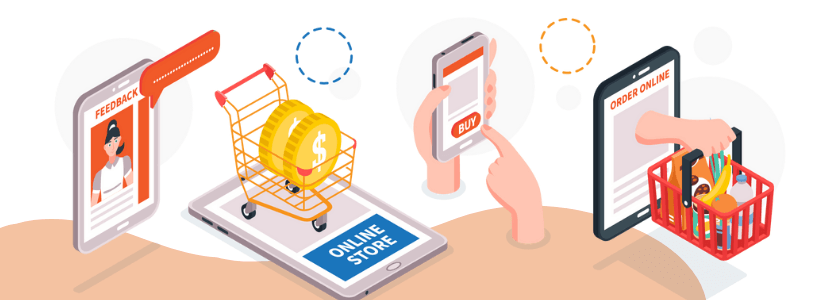
Using headless e-commerce has many advantages. Content- and experience-driven initiatives based on headless commerce can provide brands with the following benefits:
1. Advance technologies to create websites
Brands can test new technology in a headless environment. Instead of being bound by the constraints of a standard CMS, developers can delegate all of the jobs for running an e-commerce business to individual software that is tailored for that purpose of your business.
The theme or template that governs what customers see is called the front of most e-commerce websites. Because you can connect a CMS, DXP, or Internet of Things device (IoT) that is expressly geared for creating content- or experience-led commerce, headless offers for more flexibility in content distribution. This front-end can then be replaced without affecting the back-end activities.
A headless e-commerce platform stores content centrally and can provide it via API to any location. This technology enables considerably faster delivery than typical e-commerce systems, resulting in a better consumer experience.
2. Flexibility
With the most cutting-edge technologies at their disposal, design and development teams working on headless are free to give customers a more diversified experience.
We shop on our phones, tablets, and watches these days. On Facebook, Instagram, Snapchat, and TikTok, we shop. Voice recognition gadgets like Alexa or Siri, interactive mirrors, virtual reality and augmented reality are all on the horizon.
For firms that want to succeed in e-commerce, meeting all of these touchpoints is critical. And doing so necessitates a level of adaptability that a monolithic structure lacks.
Headless commerce allows businesses to use whichever e-commerce platform best suits their needs as the engine for their online store. If a development team prefers to work with a specific technology or programming language, headless allows them to preserve what works for them while streamlining processes and improving efficiencies.
Instead of being left behind, e-commerce stores with headless architecture are in the best position to address these future advancements.
3. Customer acquisition costs are lower and conversion rates are higher
A rise in paid advertising is driving up customer acquisition prices for many organizations. Because your brand may employ a content- or experience-led strategy to attract organic visitors instead of depending on paid advertising, becoming headless is an excellent method to cut costs. Conversion rates are also aided by dynamic and smooth client experiences.
4. To achieve true omnichannel success
First and foremost, a headless content management system will assist you in getting your material to where it needs to go. A headless solution is simple to implement across the board, is optimized for international SEO, and is integrated into the overall data orchestration architecture. For an e-commerce business, this means delivering your products, product videos, and blog entries to any new or emerging channel.
Prepare to sell using Alexa Skills, digital signage, PWA (progressive web apps), and even touchscreen refrigerators (yes, they do exist now).
5. Gain a competitive edge
With advanced technology, you already have a benefit. Headless e-commerce also helps you gain a competitive edge over other websites. Here is an example for better understanding.
Every few weeks, major commerce brands that use a traditional platform release an upgrade. In comparison to Amazon, which deploys updates every 11.7 seconds on average, they reduce both the amount and duration of outages. When a front-end system is loosely connected with the back-end, you don't have to update the entire system; only a portion of it needs to be updated.
On the other hand, while transitioning to a headless platform, some of the advantages of a monolithic platform are lost. Here are the cons of headless architecture.
Drawbacks of Headless E-commerce
1. It is quite expensive
Developers must create their front end because headless commerce systems do not provide one. On the one hand, this is fantastic because it allows developers to create custom front ends for each device and touchpoint. Building templates and user interfaces from scratch, on the other hand, can be time-consuming and costly.
An inexperienced person will not be able to go headless. Advanced coding knowledge is required, which normally necessitates the time and expertise of a professional developer. Both of these things are costly.
2. Headless commerce allows for more customization, but it also adds to the complexity
Instead of dealing with a single, interdependent e-commerce platform and a single "throat to choke," you now have to deal with multiple vendors and technologies, each with their own set of bugs and security vulnerabilities, as well as their installation, configuration, troubleshooting, and support methods. And all of these headless, independent projects running at the same time necessitate different development teams, test cases, QA teams, and a great deal of complexity.
3. The loss of native e-commerce capability
When you decouple your existing headless e-commerce platform from the back end, you may lose some native front-end commerce capability. It's possible that page creation, previewing (WYSIWYG), and merchandising are no longer available.
Companies using Headless e-commerce
A headless CMS provides the underlying repository for organizing content flows for tailored, integrated experiences, which is especially useful for e-commerce businesses. It is the best option if you want to distribute content to more than one presentation channel and have a huge user base.
If you think a standard e-commerce solution is too inflexible for the project you're working on and places too many restrictions on you, headless CMS could be the way to go. Let's see which are the companies using this solution:
- Amazon - The world's largest online marketplace allows consumers to place orders in several ways by integrating various devices such as wearables, smartphones, laptops, and the Amazon Echo Dot.
- Shopify- You can use Shopify's APIs to implement a headless method without having to migrate.
- Etsy- It's API-first architecture supports a wide range of devices, addresses server-side performance issues, and was swiftly embraced by development teams.
- Toyota - To facilitate interaction with legacy and IoT, Toyota has recently implemented headless commerce tools with APIs and middleware. This allows them to provide an exceptional experience in both B2B and B2C situations.
- McDonald's (MCD) – McDonald's is taking headless commerce to new heights by acquiring Dynamic Yield's AI-powered personalization platform for web, app, and IoT, as well as accepting payments from a variety of payment platforms.
How to get started with headless commerce?
Headless e-commerce has a lot of benefits. However, the mere concept of re-platforming deters many businesses from implementing a headless system. The correct headless service can help you avoid the difficulties and difficult decisions that come with replacing your system.
Developers can use APIs and capabilities provided by commerce platforms to create coordinated, brand-consistent experiences across channels using a single view of data. Meanwhile, creative teams concentrate on what they do best: improving consumer engagement and conversions by optimizing the user experience and interface.
All of this appears to be quite difficult, doesn't it?
If you need any assistance in building headless e-commerce application for your retail business, feel free to contact us. We would be happy to offer you a consultation or a project estimate.
